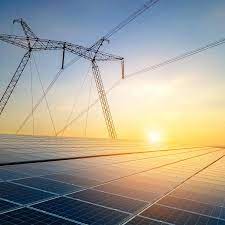
Ever get to the end of a billing cycle, glance at your energy invoice, and wonder—how did it get this high again? Most business owners have. And if you’re running a retail operation, especially across multiple sites, it’s not just the energy usage itself that’s costing you. It’s the passive losses—the ones that creep in when energy efficiency is ignored altogether.
TL;DR: What are the hidden costs of ignoring energy efficiency?
Ignoring energy efficiency leads to:
- Higher operating costs
- Equipment wear and tear
- Lower staff and customer comfort
- Missed government rebates
- Poor sustainability scores
All of which quietly sabotage your bottom line while making it harder to reduce retail store energy bills.
What do energy inefficiencies actually look like?
They’re sneaky. It’s not always broken gear or flickering lights. More often, it’s:
- Refrigeration units running 24/7, even after hours
- Air conditioners left blasting in unoccupied stockrooms
- Halogen lighting still in use when LED upgrades are dirt cheap
- Outdated thermostats with no smart controls
Anyone who’s walked into a shop first thing in the morning to find the heating still on full knows this pain. It’s death by a thousand kWh.
How much can energy inefficiency really cost?
Let’s get blunt: it adds up.
A single fridge running inefficiently can cost you an extra $200–$300 per year. Multiply that across multiple appliances, across multiple locations—and you’re bleeding thousands annually.
But the damage isn’t always visible in the dollar amount. Poor energy performance shortens the life of HVAC systems, reduces comfort levels for both staff and customers, and triggers compliance red flags for businesses now being evaluated on sustainability metrics.
In one case, a regional clothing retailer in NSW saved over $12,000 a year after an audit revealed that several stores were operating on outdated aircon units set to run overnight—completely unnoticed by management.
What long-term risks come with ignoring efficiency?
Let’s talk future costs—the kind that don’t show up immediately on your energy bill but hit hard later.
- Asset degradation
Inefficient equipment runs hotter, works harder, and breaks sooner. You’re stuck with more maintenance, higher repair costs, and earlier replacements. - Missed rebates and grants
State and federal governments often offer incentives for upgrading systems or improving energy performance. But you’ve got to take action to claim them. Wait too long, and the money’s gone. - Non-compliance fines or ESG setbacks
More and more businesses—especially those in retail chains—are being assessed on ESG (Environmental, Social, and Governance) criteria. Poor energy data? It’s a red flag. - Brand damage
Yes, your customers care. Studies show that 70% of Aussies prefer businesses with visible sustainability initiatives. Energy inefficiency isn’t invisible forever—it shows in the form of sweaty stores, flickering lights, or cold dressing rooms.
Why do so many businesses still overlook energy efficiency?
Honestly? Because it doesn’t feel urgent. It’s the silent cost—unlike a broken POS or a customer complaint, you can put it off. And let’s be real: energy bills can be confusing. Many retailers just pay and move on.
There’s also the myth that improving efficiency means big spend. But the truth is, most gains come from small, low-cost tweaks:
- Installing motion sensors in back-of-house areas
- Swapping old halogens for LED tubes
- Regularly cleaning filters on heating and cooling systems
- Using timers or smart plugs to cut after-hours load
These aren’t futuristic fixes—they’re simple, boring habits that save you real money.
What’s the opportunity cost of doing nothing?
This is the part people forget. By ignoring energy upgrades today, you’re not just wasting money—you’re missing out on:
- Lower long-term energy contracts
- Lower insurance premiums (yes, some providers factor energy risk)
- Lower carbon reporting obligations
- Higher valuations (especially if you’re planning a sale or expansion)
Think about it. If you’re running a retail store that brings in $500,000 in revenue, and you’re losing 4–5% of that on excessive energy costs—that’s $20,000+ per year. Now stretch that across five stores.
How can you start without overhauling everything?
Here’s a no-drama approach that works:
- Review your energy bills quarterly
Don’t just file them. Compare across locations and look for patterns. - Do a walk-through
Lights, fridges, heating—anything that’s humming when it shouldn’t be. - Use plug-in power meters
These tell you exactly how much each appliance costs you. You’ll be surprised which ones are guzzling. - Talk to staff
Ask the people on the ground—“What do you think we waste energy on?” They always know. - Tackle low-hanging fruit
Think timers, insulation, light bulb swaps, and thermostat settings.
This all feeds into a principle that every retailer understands: Consistency. Cialdini’s principle here applies—once you start doing small actions toward efficiency, you’re more likely to keep doing them.
FAQ: The Hidden Costs of Inefficiency
Isn’t energy efficiency just about being eco-friendly?
Not anymore. It’s now about protecting profit, meeting compliance targets, and staying competitive.
Do small changes even matter?
Absolutely. Small changes compound—especially across multi-site operations.
Will customers notice if I don’t improve energy use?
They already are. Uncomfortable store conditions or outdated lighting? It affects perception, dwell time, and repeat visits.
Final thought
Energy inefficiency is a slow leak in your business bucket. It doesn’t feel urgent—until you realise how much it’s already cost you. And fixing it isn’t about expensive solar panels or fancy gear. It’s about observation, action, and habits that stick.
So if you’re looking for a way to future-proof your operations and quietly claw back margins, start with what’s running in the background. Because every step you take to reduce retail store energy bills is a step away from waste—and a step closer to smarter business.
